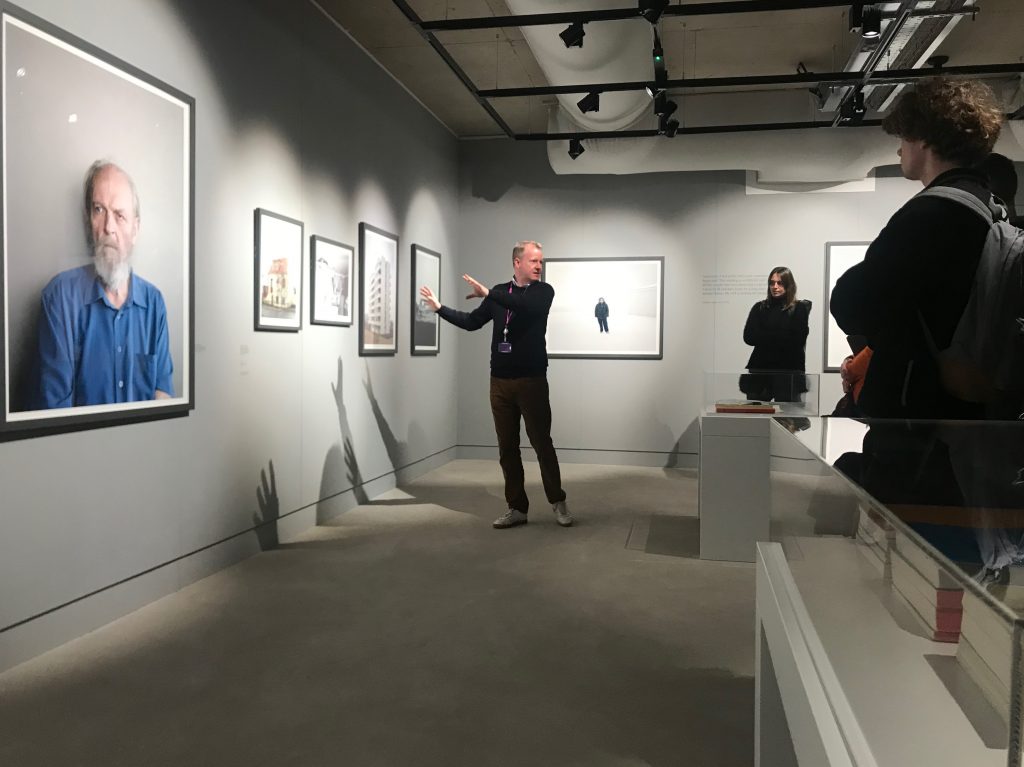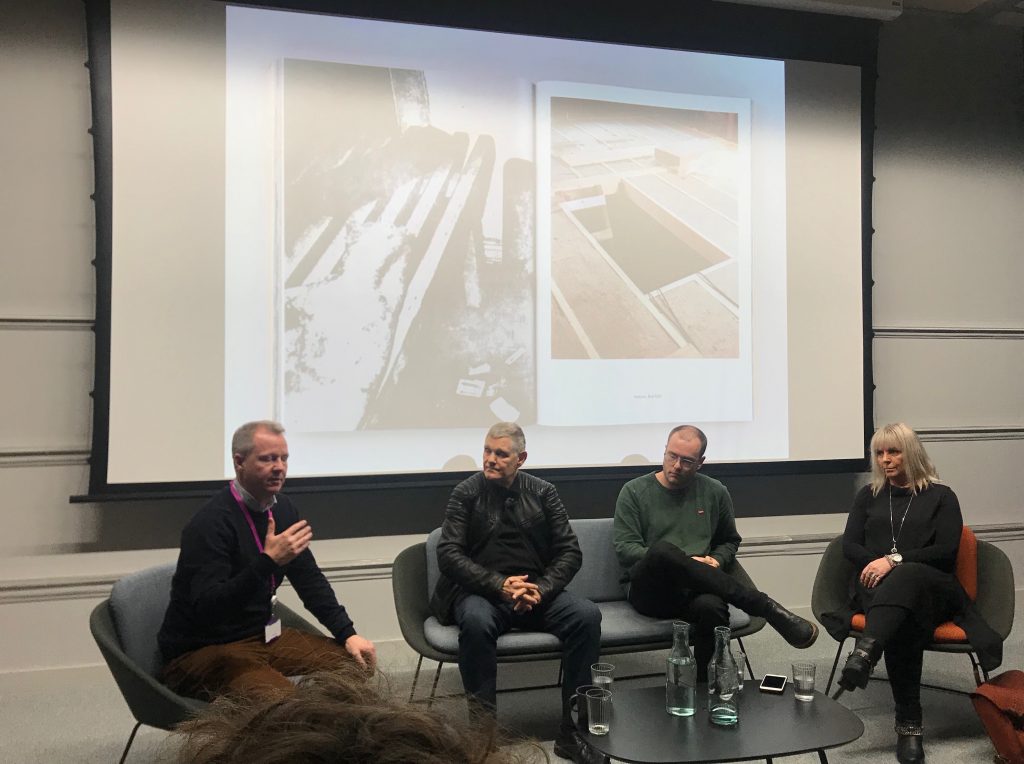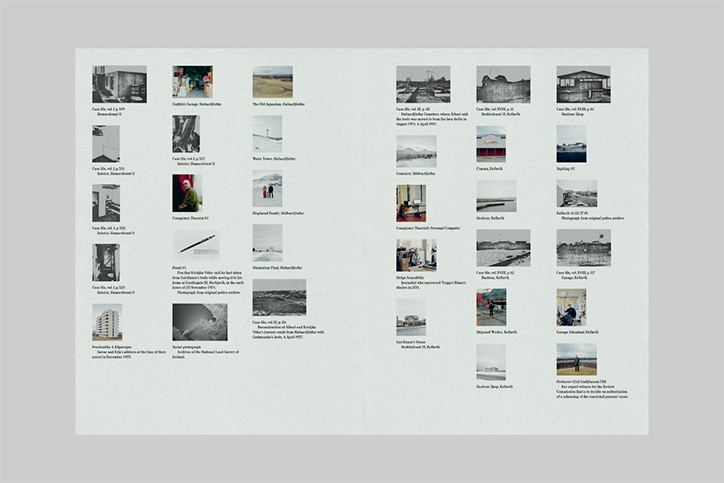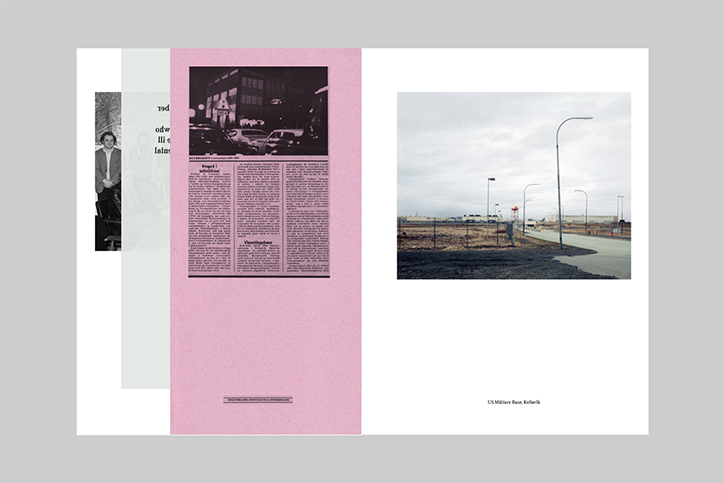RPS, Bristol, 16th November 2019

Very fortunate to have a tour of the exhibition with Curator Mark Rawlinson and then attend a panel discussion with Jack Latham, Erla Bolladóttir and Gísli Guðjónsson as part of the Falmouth MA meet-up in Bristol. There are a number of issues raised by the exhibition and discussion that are important for my own project.

The first relates to the relationship between Latham’s photographs, archival (including police) photographs, texts and artefacts. These are combined to suggest not just that that there are multiple conflicting accounts, but that accounts (and the place of photography in relation to these) are contingent, uncertain and unstable. Whilst some of Latham’s photographs revisit earlier archival images, they do not remake, or rephotograph, places and scenes, but rather revisit and re-present the place. In some cases, the places have undergone dramatic change, in other cases images of the people, and things, that now populate the landscape are presented. Images are presented out of sequence and in different forms and formats, to disorientate and disrupt in the manner of the forms of interrogation utilised. The materials provide a resource for, but don’t dictate, the construction of narratives. As Latham stated in discussion, he wants to thwart our tendency to ‘bend images to fit narratives’. Alongside each other the different forms of material prompt us to raise questions, rather than constitute a single narrative or an unambiguous description. In my own project I have to think carefully about the relationship between different elements, and the complex relationships between people, places, things and different accounts.

The second relates to the relationship between the different realisations of the project. The exhibition and the book are clearly very different ways of engaging with the work (and the discussion between the photographer and other participants in the project is yet another). Moving around the gallery makes the investigation of the narratives easier than the linear structure of the book. The scale of of the photographs and the juxtaposition in space are also to the fore in the gallery space (pictures are in clusters, next to each other, opposite each other, obscured and revealed by movement around the space. On the other hand, the book offers a tactile experience, accentuated by the use of different papers (including sugar-paper), gatefolds and french folds, loose images, text on transparent papers and so on. This mirrors my earlier discussion of the the relationship between film Island and the related installation.

The third aspect relates to the relationship between the photographer and the participants in the project (also raised in the guest lecture by Sebastian Bruno this week, who initially made his work with minimal engagement with the community, but latterly has adopted a more collaborative approach). The project required close collaboration with the people imprisoned and those involved in seeking justice. Latham mentioned that he sought the agreement of the people involved before the final edit of the book was approved (he arranged to have a meal with everyone and went through the edit with them). This emphasised the importance of engaging collaborators in deciding the form that are taken by the outcomes of the project.
The fourth relates to consideration of what it is possible for photography to achieve, and how it might contribute to a multi-disciplinary investigation (such as this project, which involves psychologists, forensic investigators, ‘conspiracy theorists’ and others). Latham is clear about the limitations of photography to tell stories, and raises questions, for me, about whether ‘telling stories’ should be a primary aspiration for photographers. Rawlinson refers to Allan Sekula’s advocacy of the use of sequences of photographs through which to create a narrative. Latham’s work operates in a different way. His aesthetically and technically accomplished images are woven into the other material to produce multiple narratives. Their contribution is distinct, and arguably could not have been achieved by any other form expression/(re)presentation. The images alone do not form a narrative, nor do they provide, in themselves, illumination or analysis. They do, though, draw us into engagement with the people and places depicted, and their part in the overall complex of narratives. They also disrupt assumptions about placed he passage of time. The success of this, for me, has its foundations in Latham’s modesty about what photography alone can achieve, and inquisitiveness about how these achievements can be enhanced within a multi-disciplinary, and multi-modal, project. This is at the heart of my own project, which seeks to explore what, distinctively, photography can contribute, both as a practice and outcomes, in multi- and inter-disciplinary work.
